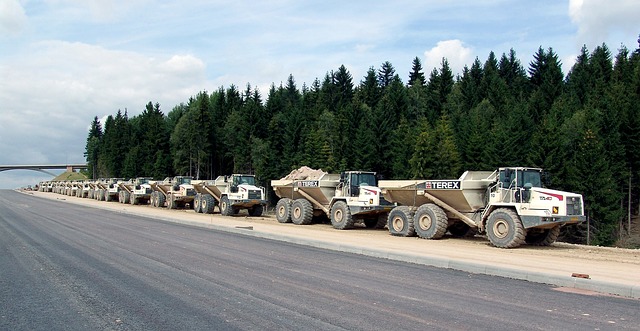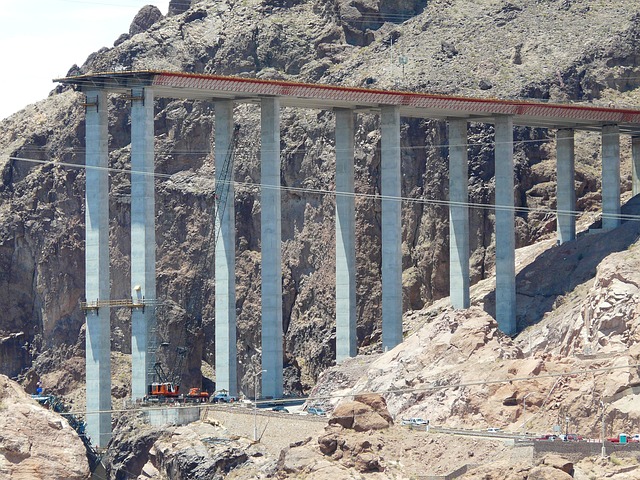The Road Ahead: How Road Construction Contractors Ensure Quality and Safety
Road construction is a vital aspect of modern infrastructure development. It not only facilitates transportation but also promotes economic growth and community development. However, the process of constructing roads poses significant challenges. The construction environment is fraught with potential hazards, and the quality of the workmanship directly impacts the safety and durability of the finished product. In this article, we will explore the various methods that road construction contractors use to ensure quality and safety throughout the construction process.
The Importance of Quality and Safety in Road Construction
The quality of road construction is pivotal to ensuring the longevity and safety of roadways. Poorly constructed roads can lead to a myriad of issues including:
- Increased wear and tear on vehicles.
- Higher maintenance costs for local governments.
- Increased risk of accidents due to poor visibility or structural failures.
Safety is equally paramount during the construction phase. The construction sites present various risks to workers, motorists, and pedestrians, making it essential for contractors to implement stringent safety measures. This commitment to quality and safety not only protects lives but also enhances the reputation and credibility of the contracting firm.
Planning and Design Phase
The journey toward quality and safety in road construction begins long before the first shovel hits the ground. The planning and design phase is crucial, as it lays the foundation for the entire project.
During this phase, contractors conduct thorough site assessments to evaluate soil conditions, environmental factors, and traffic patterns. This data is vital in informing the design of the road. Proper planning includes adherence to local regulations and standards set forth by relevant authorities, ensuring that the project is compliant from the outset.
Collaborating with engineers, architects, and urban planners can bring various perspectives into the design process, ultimately resulting in a safer and more effective road plan. Additionally, the incorporation of modern technology, such as computer-aided design (CAD) and geographic information systems (GIS), allows for precise modeling and visualization, which enhances safety and quality in the infrastructure development process.
Materials Selection
Choosing the right materials is one of the most significant aspects of ensuring quality in road construction. Contractors must select materials that not only comply with industry standards but also withstand the test of time and environmental elements. The key materials include:
- Asphalt: Known for its durability and flexibility, asphalt is a common choice for paving. The quality of the asphalt mixture is crucial; contractors often perform tests on aggregate size, temperature, and binder quality.
- Concrete: Used for road foundations and surfaces, concrete is selected based on its strength and resistance to environmental wear. Special admixtures can enhance its performance under specific weather conditions.
- Geosynthetics: These materials are often incorporated into road construction to provide additional strength, drainage, and erosion control. They play a critical role in soil stabilization and road longevity.
To ensure optimal quality, reputable contractors source materials from trusted suppliers and often conduct on-site tests to guarantee compliance with required standards.
Workforce Training and Safety Protocols
The human factor is often the most variable aspect of road construction, making workforce training an essential component of maintaining quality and safety. Contractors invest in extensive training programs that cover a range of topics, including:
- Equipment operation safety to minimize accidents and injuries.
- Understanding materials and their proper handling.
- Emergency response procedures in the event of an onsite accident or hazard.
Moreover, adherence to Occupational Safety and Health Administration (OSHA) guidelines is critical. Contractors employ safety managers to oversee operations, enforce safety protocols, and continually assess potential risks. Regular safety drills, site inspections, and equipment checks are conducted to create a culture of safety.
Construction Techniques and Practices
Once the planning is completed, and the workforce trained, contractors implement proven construction techniques that prioritize safety and quality. This encompasses various stages of the construction process:
Site Preparation
Site preparation involves clearing the area and grading the land to create a stable foundation for the road. Proper drainage is also established during this phase to prevent water accumulation, which could weaken the road structure over time. Contractors must be vigilant in inspecting the groundwork and ensuring it meets required standards before proceeding.
Pavement Installation
The installation of pavement is a critical phase of road construction. Whether using asphalt or concrete, contractors follow strict procedures to lay the material evenly and accurately. During this process, temperature monitoring for asphalt, for example, is essential as it affects the adhesion and final quality.
Quality Control Inspections
Throughout the paving process, ongoing quality control inspections are vital. Contractors typically employ quality assurance teams that conduct regular assessments, measuring thickness, density, and levelness of the pavement layer. Any irregularities are addressed immediately to maintain high-standard outcomes.
Post-Construction Assessment
Once the road construction is complete, the focus shifts to post-construction assessment. Contractors perform a series of evaluations to ensure the finished product meets all local and federal standards. This may involve:
- Conducting load testing to assess durability under vehicle weight.
- Assessing the drainage system for efficiency to prevent flooding or erosion.
- Monitoring the road over a defined period to identify potential issues that may arise due to environmental changes.
Feedback from local traffic authorities and the community also plays a significant role in this assessment, as it helps contractors refine their processes for future projects.
Technology in Road Construction
Technology has revolutionized the road construction industry, providing innovative tools and solutions that enhance both safety and quality. Some examples include:
- Drone Technology: Drones are increasingly utilized for site surveying, providing real-time imagery and data that aid in better decision-making and monitoring of construction progress.
- BIM (Building Information Modeling): This advanced modeling technique allows for the visualization of all aspects of the construction project, facilitating better collaboration among stakeholders and improving risk management.
- Smart Materials: Innovations in materials science have led to the development of smart materials that can respond to environmental changes, significantly improving road durability.
Conclusion
As society continues to evolve, the need for high-quality and safe roads becomes increasingly essential. Road construction contractors are at the forefront of this vital task, employing a comprehensive approach that encompasses meticulous planning, material selection, skilled workforce training, rigorous construction techniques, and the implementation of innovative technologies.
The commitment to ensuring quality and safety in road construction is not just a regulatory requirement but a moral obligation to safeguard the lives of workers and the travelling public. By fostering a culture of excellence, contractors not only deliver substantial infrastructure projects but also contribute to the overall well-being of the communities they serve.
In the road ahead, it is evident that a proactive approach, combined with an unwavering commitment to standards, will lead to safer and more resilient roadways—essential arteries of movement for generations to come.


